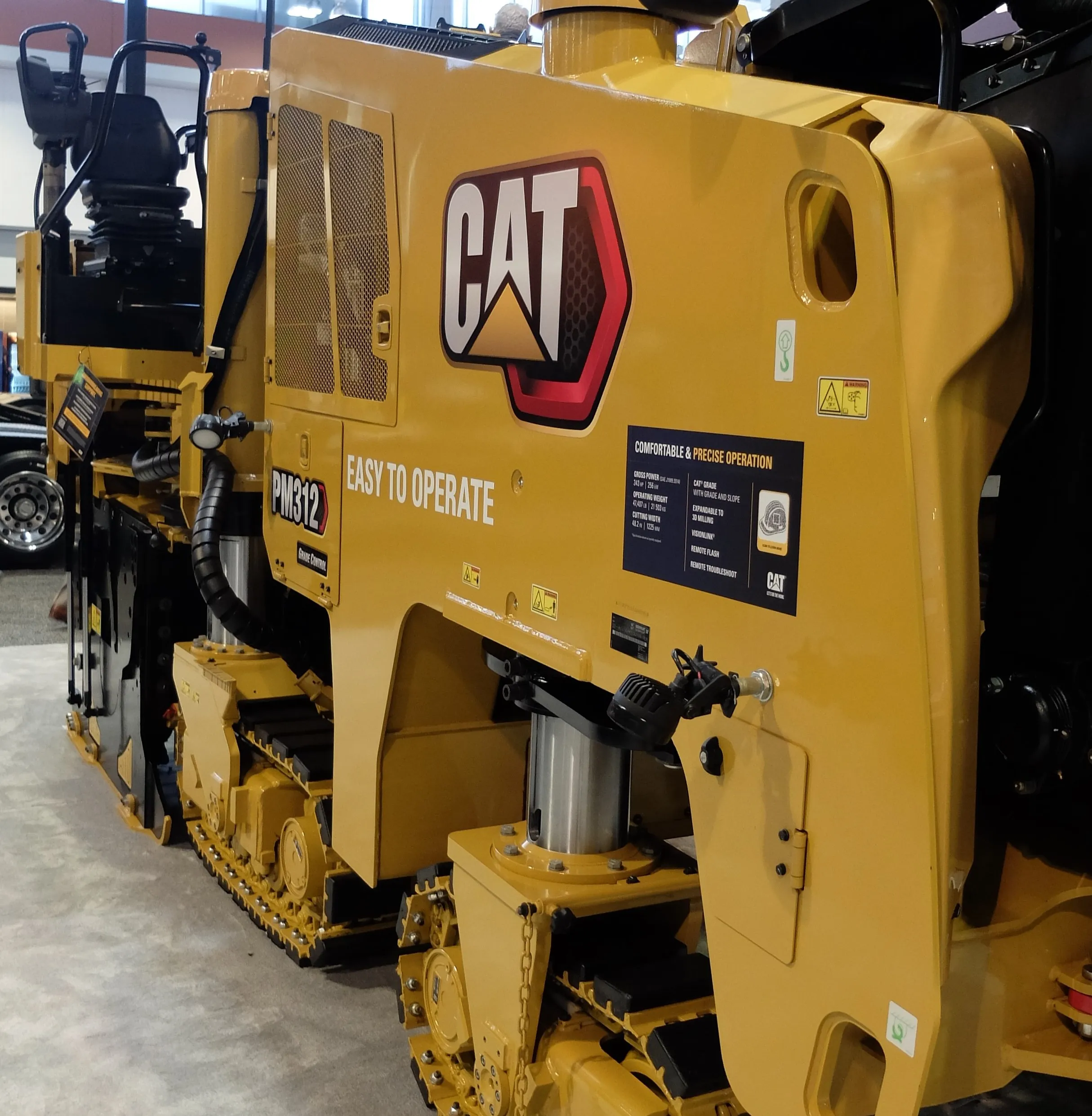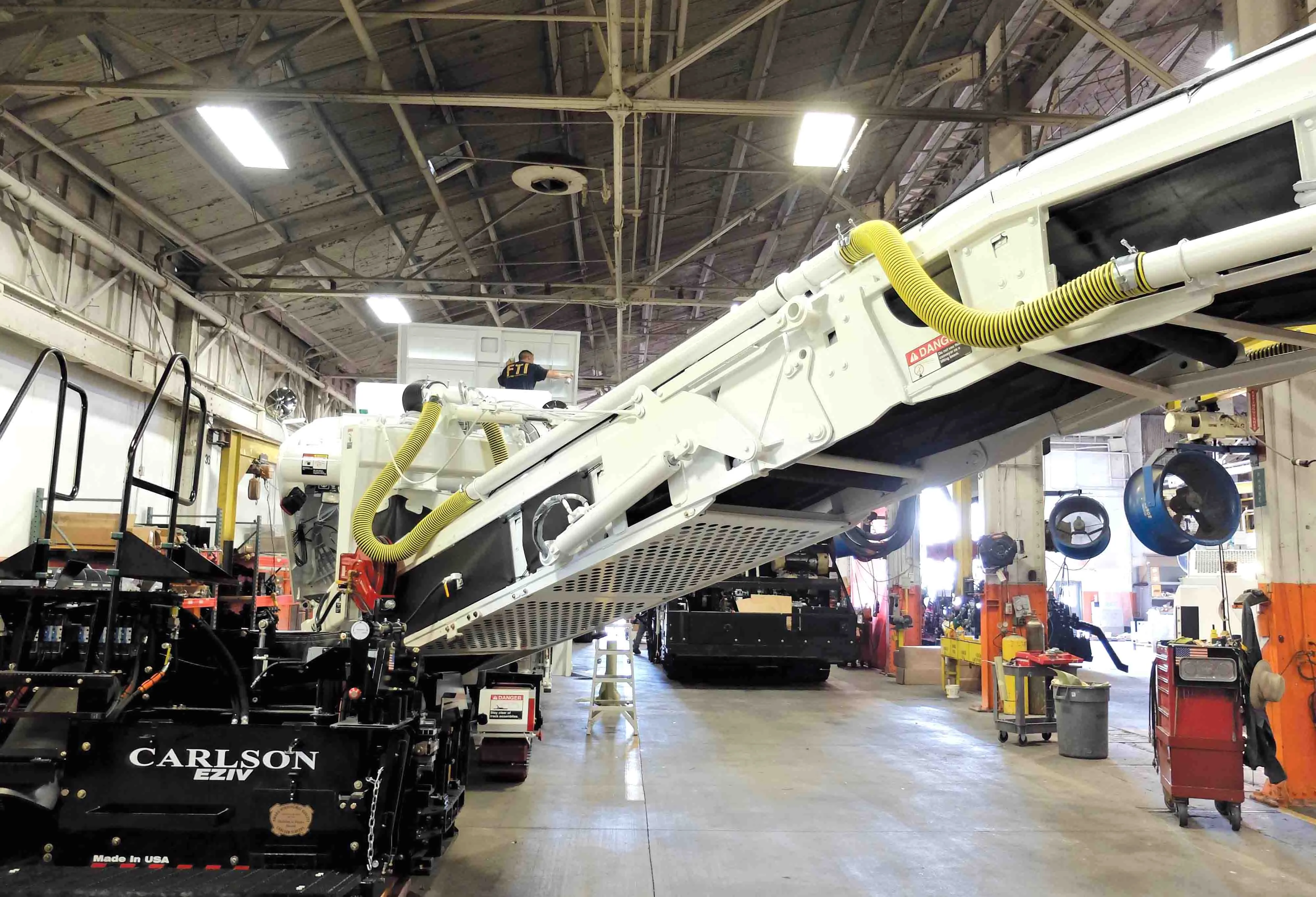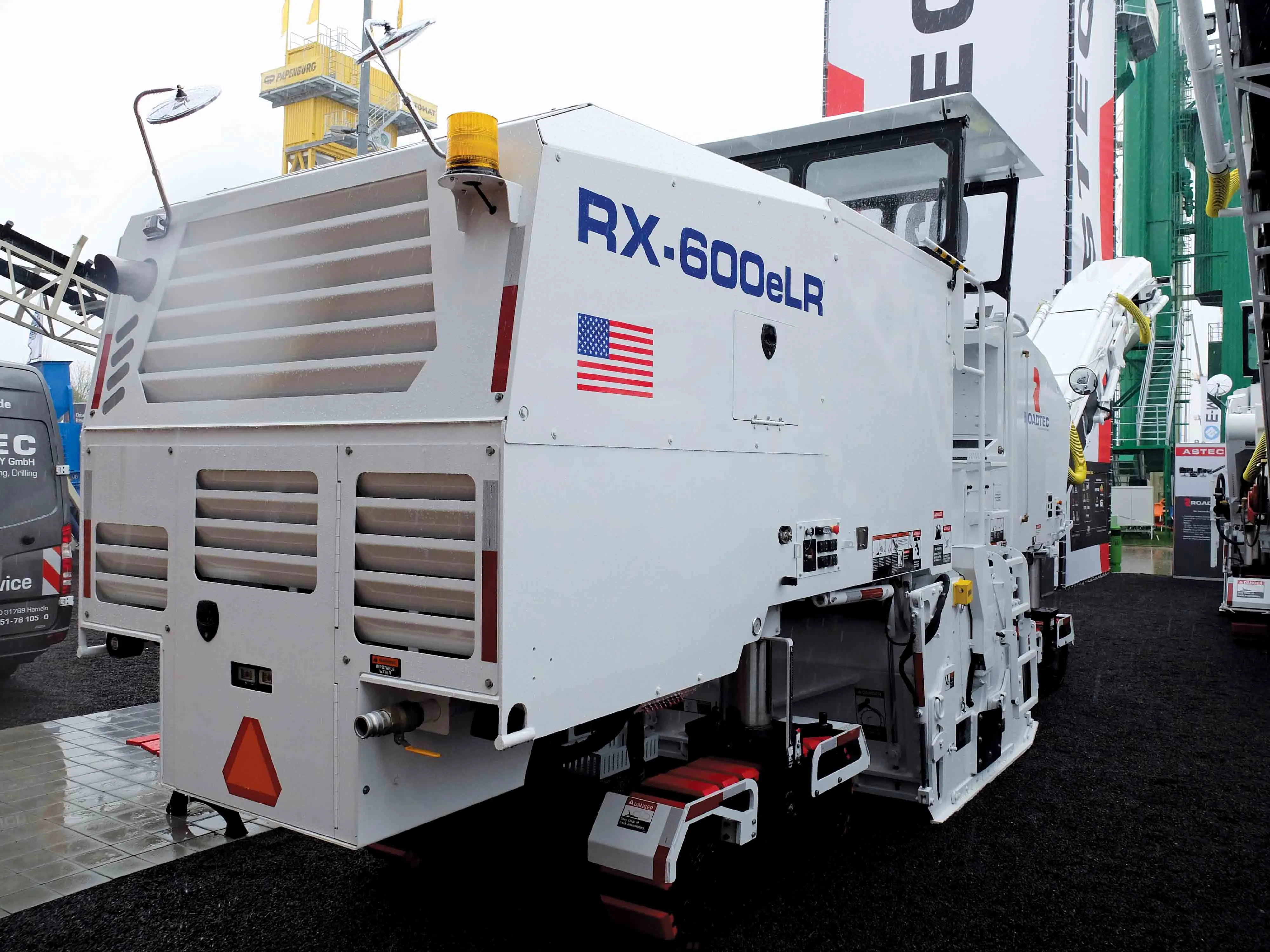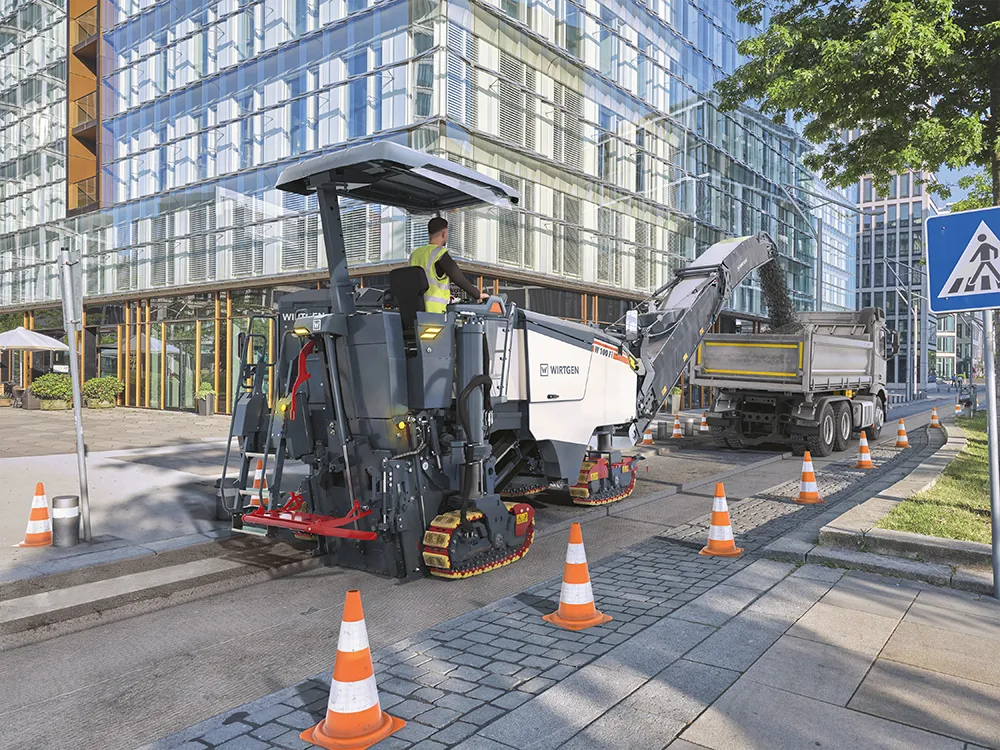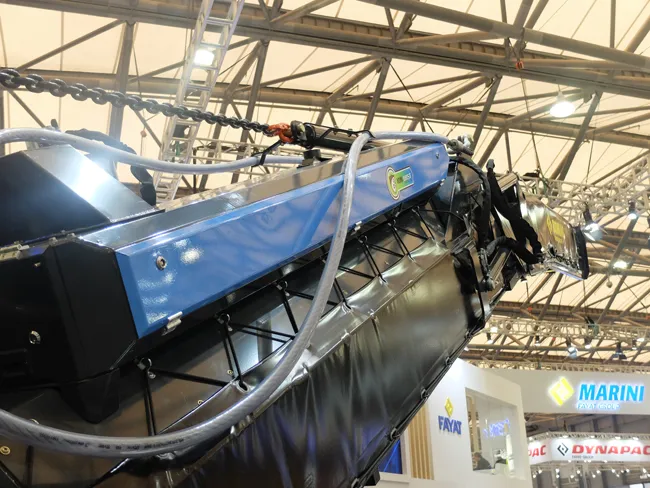
The latest advances in road recycling and milling technology will allow contractors huge gains in operating efficiency. Road milling is hard on equipment and manufacturers have come up with improved systems that will allow machines to operate for longer, with less maintenance. At the same time, sophisticated technology means that machines can now deliver more accurate milling operation, while material cutting are also more homogenous and more suitable for reuse.
However, a key innovation from
According to BOMAG, this patented system reduces dust by 80%. Any dust settling on the machine can be simply washed off at the end of a shift as the particles will remain stuck together.
The system is being introduced first on the firm’s smaller milling machines as these are typically used for operations in urban locations, where there may be concerns about dust.
In addition, BOMAG has redesigned the milling drums for its planers, which is said to improve cutting performance. The diameters of the drums have been reduced while the tool holders have been increased in size. The firm says that the tool tips retain the same outer diameter as before. And as there is increased space between the tool tips and the drum itself this improves the flow of milled cuttings according to BOMAG. The tool spacing on the drums has also been optimised, with different patterns to suit varying surfaces and further improving cutting.
Revised cutting is also a focus for
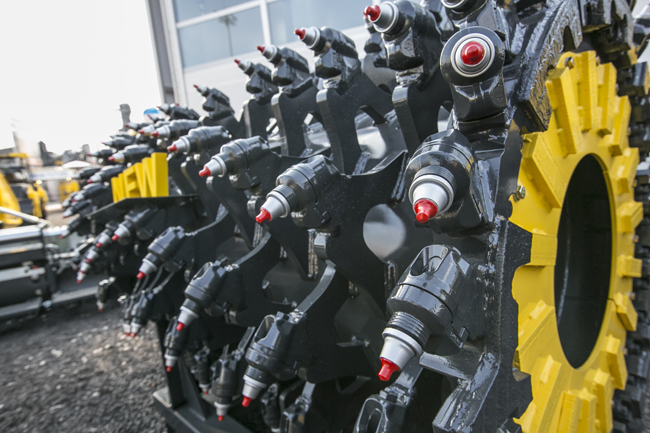
Caterpillar has redesigned its tool holders, allowing the tools to rotate more easily and ensuring that wear rates are more even across the cutting tips, extending working life and also improving milling finish. At the same time, the new design also ensures that the holder is held in place more securely. The firm has developed a tempered retention system that is quicker and easier to use and has done away with the need for a securing bolt at the rear. The heavy-duty holders themselves are also more rugged and durable. In addition, the paddle units that bolt onto the drum are double-sided, allowing them to be turned round and doubling working life.
Customers can choose a wider range of application-specific cutting tools than before, with the firm highlighting that its premium diamond cutters offers the best working life and finish in the right application.
From
The firm is also offering options for improving milling performance using the latest machine control tools. Roadtec president John Irvine said, “We’ve also got Leica Geosystems’ mm GPS.”
He commented, “We’re plug and play ready now. It’s starting to be really important for airport construction now.”
The company has also added extra functionality to the telematics system installed on the RX700e, as well as the other mills. Roadtec’s Guardian telematics package provides the user with two-way communications between the machine and the office. Irvine said, “We’ve rolled that out through the whole line now. We can an update programs and anticipate failures.”
Further upgrades are due for the Guardian package and Irvine said, “We’re looking at electronic truck ticketing.” The firm says that this system can determine how much is in the trucks and determine their ETA.
As the worldwide leader in the road milling market,
The company is offering new generation large milling machines; the W 210 Fi, W 200 Fi and W 200 F. The W 210 Fi can be fitted with cutting drums of 2m, 2.2m and 2.5m, while the W 200 Fi and W 200 F can be fitted with drums that are 1.5m, 2m or 2.2m wide. The planers can be used for applications ranging from surface course rehabilitation to complete removal and fine milling.
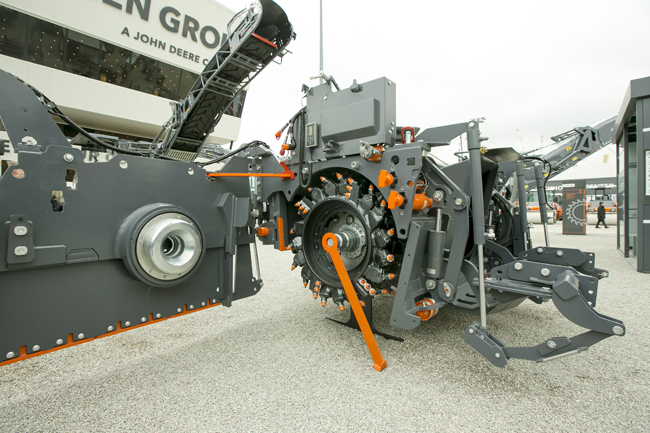
These three machines all benefit from Wirtgen’s latest digital systems and telematics technology, intended to combine digitisation, automation and documentation of milling work. The firm calls this its connected milling focus, which covers the flow of data between the machine, operator, servicing facility and scheduling department.
Wirtgen’s WITOS telematics package and scheduling package forms the basis of the system, incorporated with its new mill assist and performance tracker systems. The sophisticated mill assist package is said to simplify the operator’s job, maximise machine performance, optimise operating costs, increase the quality of the milled surface and help lower the environmental impact of road construction work.
This highly sophisticated control technology has been developed in-house by Wirtgen. The operator can run the machine in automatic mode, allowing it to set cutting depth and drum speed. The system monitors operating parameters continuously and is said to then optimise machine functions and change these in real-time as required, to best suit job site conditions. The new machines also benefit from a two-speed powershift transmission to the cutting drum, which the system also uses to help further optimise working.
The sophisticated package is said to reduce the operator’s workload, while also improving machine performance and reducing diesel consumption, CO2 emissions, and working noise. Tool life is also extended, increasing the time between replacement and further optimising running costs.
The company is offering the Wirtgen performance tracker (WPT) system for all milling machines built since 2010. Data is recorded continuously, providing complete tracking of the milling performance. When a milling job is complete, a measurement report is generated automatically in Excel and PDF versions and can be emailed to the machine operator’s order control department for example. The recorded data can be used for later analysis and also to meet BIM requirements.
Wirtgen says it has further improved its new Level Pro Active system, which allows the operator to control machine levelling. Automatic functions have been added,
such as a system that will raise the entire machine as it passes over an access cover or drain in the road. It will also assist when positioning the machine for a second cut, speeding up working and boosting cutting quality.
Wirtgen’s latest multiple cutting system (MCS) means that milling drums can be changed out more quickly than before. According to the firm, it now takes just 50 minutes to change drums, compared with two hours as needed previously.
The new design has a single large diameter screw holding the drum in place, which can be removed using a special tool. The previous design used 20 bolts, which took rather longer to remove.
Once the drum has been unbolted, it can be removed from the planer using a forklift truck, with the same forklift then being used to bring in the replacement drum.


